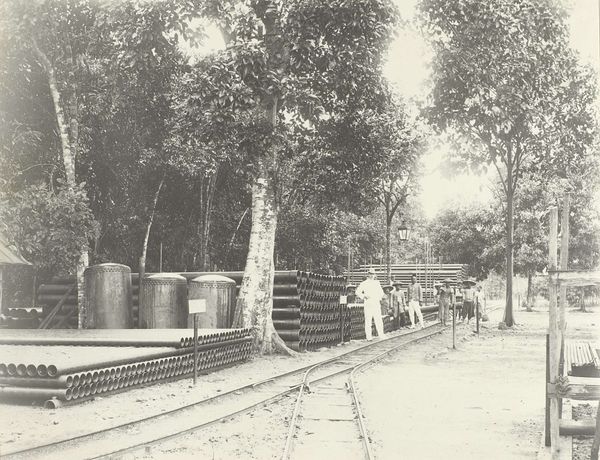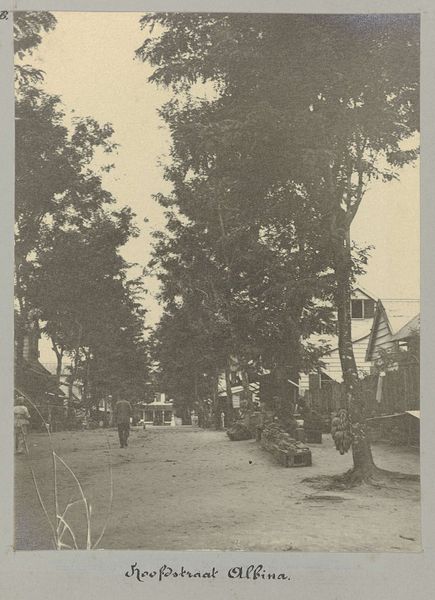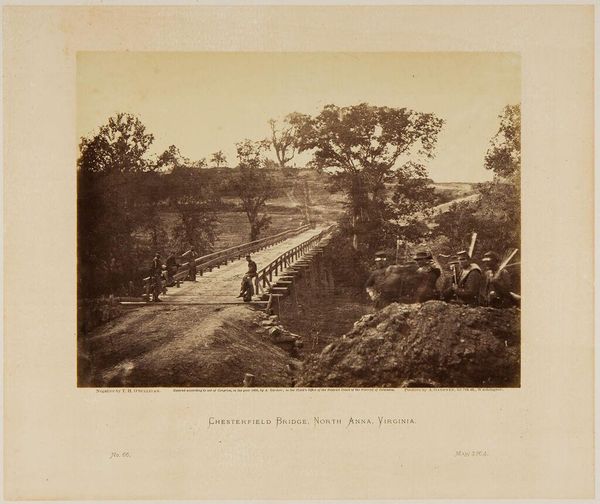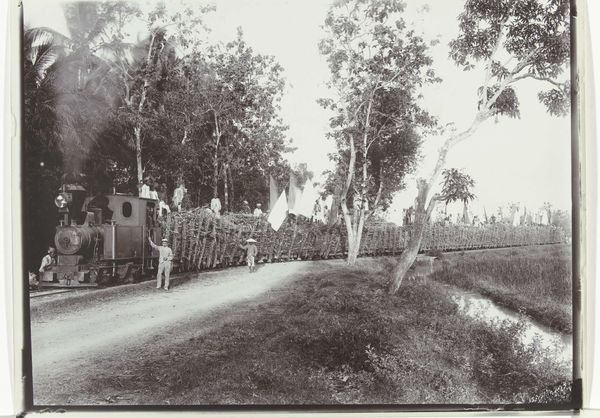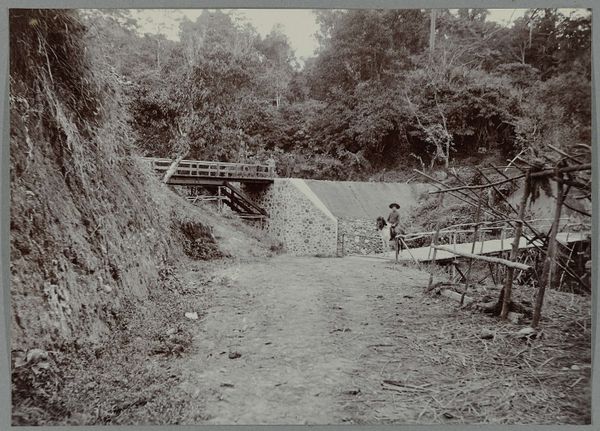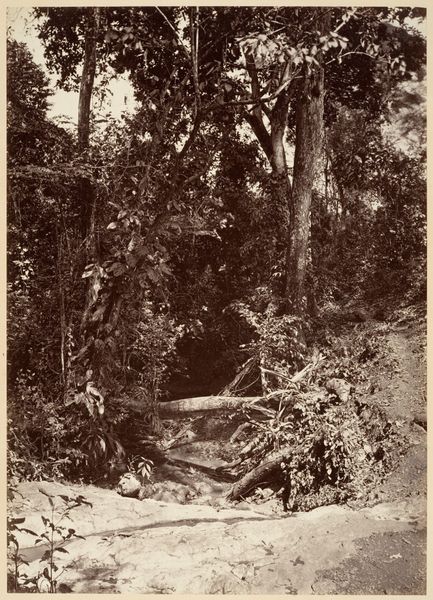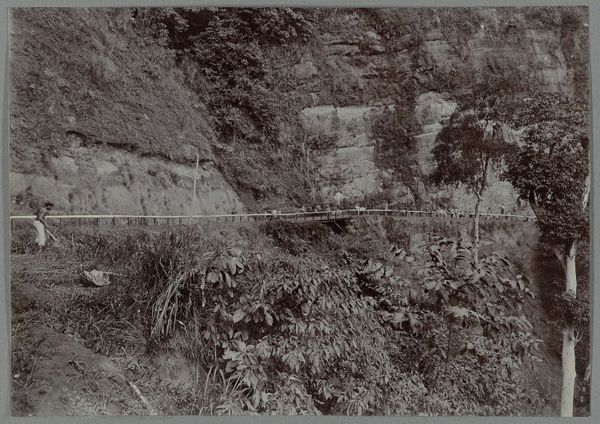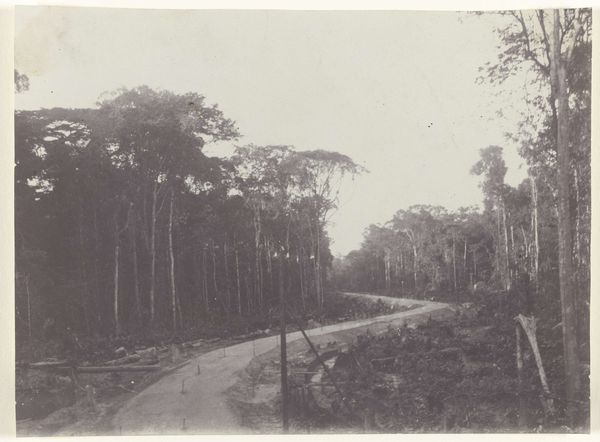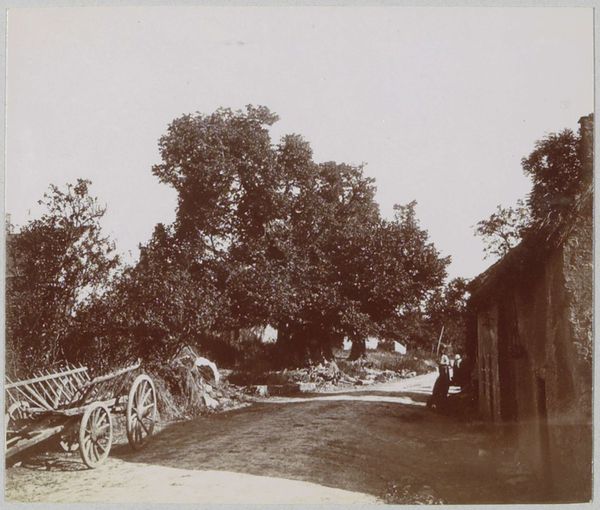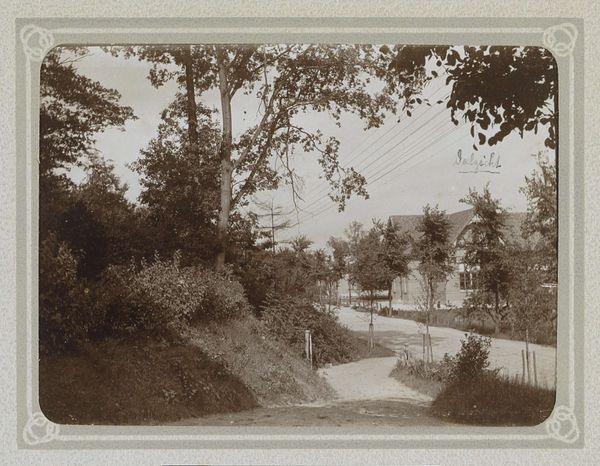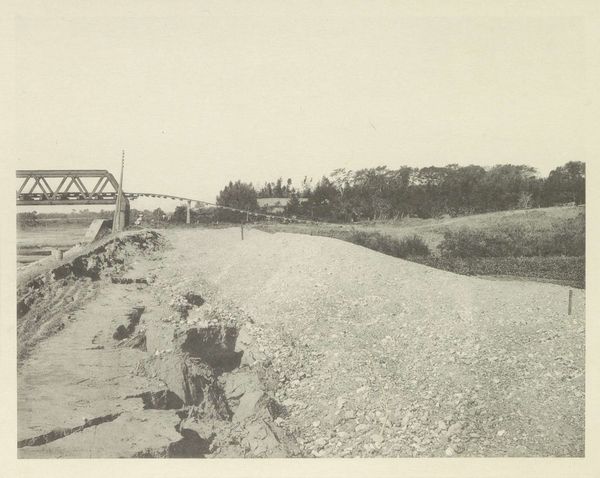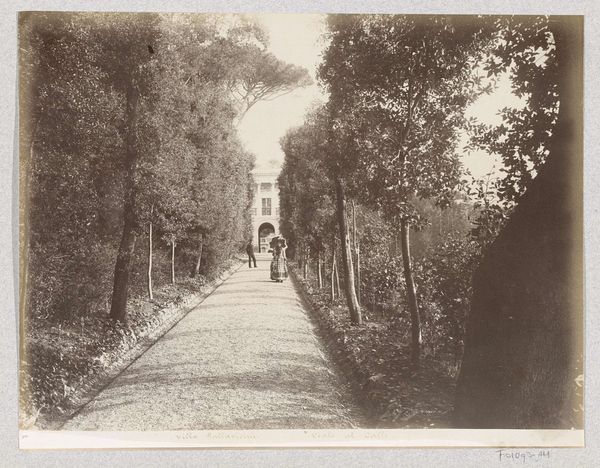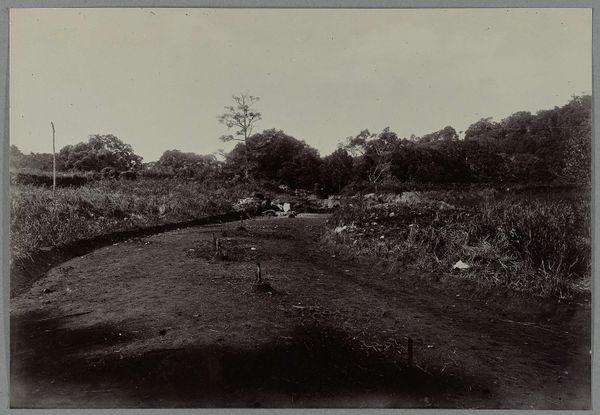
photography
#
sculpture
#
landscape
#
charcoal drawing
#
photography
#
realism
Dimensions: height 280 mm, width 215 mm, height 385 mm, width 440 mm
Copyright: Rijks Museum: Open Domain
Editor: Here we have an intriguing photograph titled "Spoorbaan naar olietank," or "Railway to Oil Tank" believed to be taken sometime between 1903 and 1907 by an anonymous photographer. The linear composition draws my eye to the oil tank in the distance. What compositional elements stand out to you? Curator: Observe how the photographer utilizes the strong diagonal line created by the railway. This linear perspective forces our vision towards the vanishing point where the tank resides. Consider also how the dense foliage on either side acts as a framing device. It accentuates the industrial intrusion on the natural landscape, wouldn't you agree? Editor: That tension is so palpable! It's interesting how the light is handled as well – everything is flattened with not much distinction between light and shadows. It almost neutralizes any romantic feelings about the landscape itself. Curator: Indeed. The photographer eschews traditional landscape painting conventions. The even lighting denies a picturesque reading, forcing us instead to focus on the structural relationship between the man-made railway and the organic environment. It invites analysis of its formal structure. How would the photograph change, do you think, with stronger light contrast? Editor: With more pronounced light and shadow, the landscape could read more as beautiful or sublime. I think by flattening those values it creates a more confrontational image, where we cannot ignore the disruption. Curator: Precisely. The flatness of the tonal range becomes integral to its meaning. It resists easy aestheticization. Now I see the landscape in a completely different light. Editor: It's a compelling photograph, rich with considerations of form and content.
Comments
No comments
Be the first to comment and join the conversation on the ultimate creative platform.
